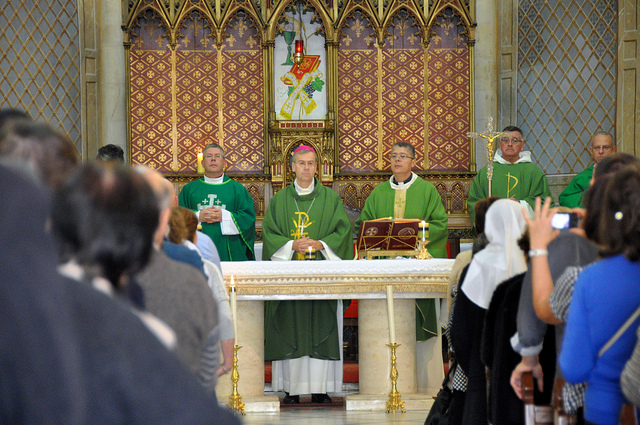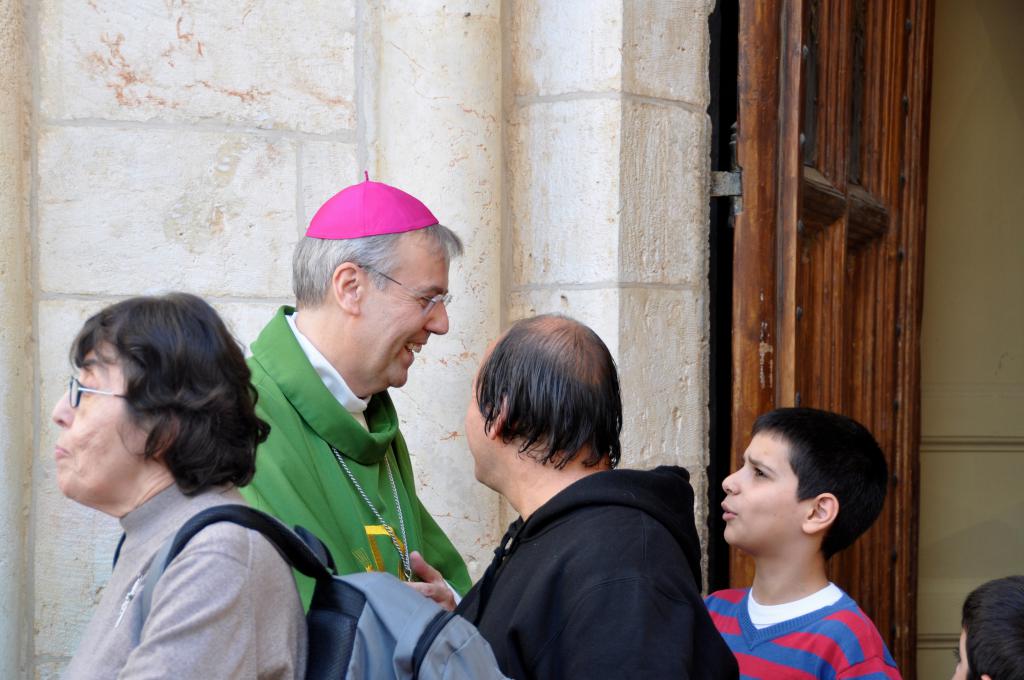This morning we travelled to Beit Jala, near Bethlehem, to celebrate Mass with the local parish at the Church of the Annunciation. All the pilgrims were particularly moved by this Mass, seeing the great faith of these people despite the hardships they face, and the beautiful and joyous singing was particularly commented upon throughout the day. At the end of Mass, Bishop Nicholas assured the congregation that we think of them often and that we will continue to hold them in our prayers. He also said that the strength and health of a community is visible in the welcome that it gives strangers, and that it is clear from the welcome we received that this is a very strong community.

After Mass, and having shared tea and coffee with parishioners, the parish priest explained to us what life is like for Palestinian Christians living in Beit Jala. Simple things that we take for granted, such as water supply, are controlled by the Israeli government, and Palestinians are only given water once the needs of the Israelis are satisfied and are taxed on what they use. Large amounts of land has been annexed from the local community and is no longer accessible due to the separation wall, meaning that their livelihoods have been lost. As a consequence of the difficult living conditions and the lack of any future for young Palestinians, many hundreds of thousands have moved to South America in search of a future and a better life. What shocked the group so much was the level of control that the Israeli government have over those living in Palestine. They have no freedom and no hope of a future.

Following lunch in Bethlehem, the group went to Manger Square and visited the Church of the Nativity, the universally agreed site of Jesus’ birth. Although the church is currently undergoing an extreme restoration project and is therefore covered in scaffolding, it was very moving and humbling to walk down into the depths of the church to the grotto of the manger where Christ was born. The site of Jesus' birth is marked with a silver star of 14 points symbolising the 14 generations from Abraham to David, from David to the deportation to Babylon, and from the deportation to Babylon to Christ (Mt 1.1-17). The higher level of the church is richly decorated according to Greek Orthodox tradition, and the group marvelled at the beautiful iconography and altarpiece.
Moving next door to the Church of St Catherine, we walked down to the Chapel of St Jerome, where he worked and was buried. St Jerome was a Doctor of the Church and is known for his translation of the Bible into Latin, the Vulgate, and his commentaries on the Gospels. This allowed the laity to read the Bible for the first time, not having to rely on the readings they heard in Mass and the teaching of their priest. In the room where St Jerome worked, the group paused to reflect on the significance of this place and offered prayers by singing together ‘Silent Night’.
To close the day, Bishop Nicholas offered prayers with the pilgrims in Manger Square. Reminding us that Jesus was born the Prince of Peace, he prayed the Prince of Peace to grant eternal rest to all those who had lost their lives in two world wars and in countless conflicts since. We prayed for all who have suffered the ravages of war and have been displaced, particularly in the Middle East. He asked that Jesus send the Holy Spirit upon the leaders of nations to guide them into the ways of peace, truth and reconciliation.




